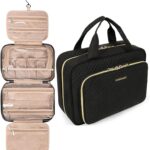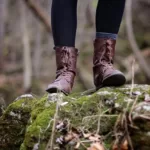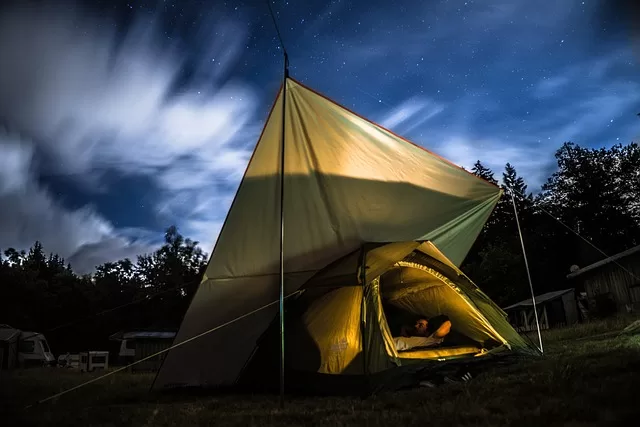Car camping is sure the best solution to camping in crowded campgrounds and the hassle of unpacking and carrying heavy backpacks when camping. For those tired of the usual struggle and hassle that comes with traditional camping like pitching a tent, setting up camp, and packing too much camping gear and equipment, then car camping is definitely the way forward. Car camping gives you easy access to beautiful campsites, saves you the stress of unpacking, and setting up camp, makes you pack more camping items, and gives you access to all amenities and more comfort.
Everything you need to know and understand about car camping has been thoroughly explored in this guide for beginners. So whether you are a beginner or just thinking of how to make your car camping experience much better, you are duly covered. In this beginner’s guide, we’ll cover everything you need to know to get started with car camping. Car camping offers several benefits like flexibility and convenience and these amongst others have been explored here. This guide also provides useful tips for preparing for car camping and the right car camping gear to pack.
Planning Your Trip
Planning your car camping trip is an important part of ensuring a successful and enjoyable outdoor adventure. From selecting the perfect campsite to choosing the right gear and equipment, here are some key tips and steps for planning your car camping trip.
Choosing a Destination
When it comes to car camping, it is important to select the right destination for a successful trip. Here are some factors to consider when choosing a campsite:
- Location: How far are you willing to travel? Do you prefer a scenic mountain view or a beachfront location?
- Amenities: Are you looking for a campsite with showers, toilets, and picnic tables? Or are you willing to rough it with more basic facilities?
- Activities: What kind of activities are available in the area? Are there hiking trails, fishing spots, or water activities nearby?
- Accessibility: Consider the ease of getting to the campsite, including road conditions and accessibility for your vehicle.
When researching campgrounds and parks, there are several resources to consider:
- National and State Park websites: These websites provide information about the park’s facilities, camping options, and activities.
- Camping apps: Apps such as Campendium and Hipcamp allow you to search for campgrounds by location and amenities.
- Online reviews: Check out reviews from other campers on the campsite websites or social media pages to get a sense of the campground’s quality and any potential issues.
Choosing Your Camping Equipment
Once you’ve selected your destination, it’s time to start thinking about the gear and equipment you’ll need. Here are some key items you should bring along for your car camping adventure.
- Tent selection and setup: You don’t necessarily need to pack a tent during car camping. But if you must choose a camping tent and shelter given that car camping allows such flexibility, choose one that is spacious enough for you and your camping partners, and make sure you know how to set it up before you arrive at the campsite. It’s also a good idea to bring a ground cloth to protect your tent from rocks and debris.
- Sleeping bags and pads: Select a camping sleeping bag and pad that is appropriate for the expected temperature range. It is actually a good idea to invest in a sleeping pad for extra comfort and insulation.
- Cooking equipment and food: Bring a camping stove and cooking gear, as well as food that is easy to prepare and store. Don’t forget to pack a camping cooler and storage, with plenty of ice to keep your perishable items fresh. Follow this guide for how to keep your food warm and your drinks cold during a camping trip to know what to do.
- Clothing and personal items: Pack appropriate camping clothing and apparel for the expected weather conditions, Don’t forget to include durable hiking boots, as well as personal items such as biodegradable camping toiletries, sunscreen, and insect repellent.
Getting Ready to Go
Car camping can be a fun and adventurous way to explore the outdoors. Whether you’re headed to a national park or a local campground, it’s important to prepare properly to ensure a safe and enjoyable trip. Getting ready for car camping involves careful packing and pre-trip vehicle preparation. With the right gear and a well-maintained vehicle, you’ll be ready to hit the road and enjoy the great outdoors.
Packing for Your Trip
There are essentials that you should never leave behind when going on car camping. This guide to car camping has a list of accessories for car trips and camping essentials that you should pack for your trip as well as camping packing tips to follow.
Checklist of Essential Items to Bring
Make a camping packing checklist of essential items to bring along on your car camping trip. This will ensure that you don’t forget anything important. Some essential items include:
- Tent, sleeping bags, and sleeping pads
- Camping chairs and table
- Cooler and food supplies
- Portable stove or grill
- First-aid kit
- Maps, compass, and GPS
- Lanterns or flashlights and extra batteries
- Clothing appropriate for the weather
- Sunscreen, insect repellent, and toiletries
- Water bottles and hydration system
- Firestarter and matches or lighter
Packing Tips and Tricks
When packing for your car camping trip, there are some tips and tricks to keep in mind to make the process easier and more efficient:
- Use packing cubes or compression bags to organize and compress your clothes and gear.
- Pack heavy items on the bottom and lighter items on top to distribute weight evenly.
- Place frequently used items at the top of your packing so you can access them easily.
- Use plastic bins or crates to store and transport gear in your vehicle.
- Don’t forget to pack a trash bag and keep your campsite clean.
- Make a list of all the items you need to bring, and check them off as you pack them. This helps ensure you don’t forget anything important.
- Pack bulky items, such as sleeping bags and tents, at the bottom of the car and smaller items on top. This maximizes space and prevents damage to fragile items.
- Use plastic storage containers or bags to keep your gear organized and easy to find.
- Pack for easy access: Pack items you’ll need during the trip, such as snacks, water, and maps, in a separate bag or box that’s easy to access while on the road
Pre-Trip Vehicle Preparation
You shouldn’t just pack and then forget to take care of your vehicle. Car camping requires you to transport yourself to your campsite in a car, so to avoid mishaps, the vehicle must also be checked before the trip.
Ensuring Your Vehicle is in Good Working Condition
Before heading out on your car camping trip, it’s important to ensure that your vehicle is in good working condition. Some things to check include:
- Tires: Make sure your tires are properly inflated and have enough tread.
- Brakes: Have your brakes checked and serviced if necessary.
- Fluids: Check your oil, coolant, and other fluid levels.
- Battery: Ensure that your battery is fully charged and in good condition.
- Lights: Check all lights, including headlights, taillights, and turn signals.
Packing the Car for Maximum Space and Safety
When packing your car for your car camping trip, it’s important to do so in a way that maximizes space and safety:
- Pack heavy items low and towards the center of the car to distribute weight evenly.
- Don’t overload your vehicle or exceed the weight limit.
- Secure loose items and ensure that everything is properly tied down or strapped in.
- If you have a lot of gear, consider using a roof rack to maximize space inside the car.
- Make sure the driver has a clear view of the road and all mirrors are unobstructed.
Setting up camp is an essential part of the car camping experience. Whether you’re a seasoned camper or a first-timer, it’s important to know how to prepare for camping and plan a successful and enjoyable camping trip by taking necessary items and camping games to stay entertained, master the art of building a perfect campfire, and follow proper campsite etiquettes like proper waste management and sanitation while camping.
Arriving at Your Campsite
When you arrive at your campsite, the next step is to set up camp and settle in to enjoy all the available fun things to do when camping. First, you must check in at the campsite office if it is an organized campsite, then set up your tent, check out this guideline for pitching a tent like a pro and how to set up camp like a pro, then set out to enjoy the adventure of the outdoors.
Checking In and Setting Up Camp
When you get to camp, the first step to take would be to check and go ahead to set up camp. This doesn’t have to be a big deal. Just respect certain rules, follow directives, and settle in and enjoy.
Checking In Tips
When you arrive at the campground, here are tips and steps to guide you through settling in:
- Check-in at the campsite office: When you arrive at the campsite, check in at the office and pay any fees or deposits required.
- Choose a campsite spot: Select a spot that suits your needs and preferences. Consider factors such as proximity to amenities, privacy, and views.
- Check the site for hazards: Before setting up your tent, check the site for any potential hazards, such as uneven ground or overhead branches.
Campsite Safety Tips
Also, check out these campsite safety tips:
- Keep a safe distance from other campers: Respect other campers’ privacy by keeping a safe distance between your campsite and theirs.
- Be aware of fire safety: Follow all fire safety guidelines and regulations, and never leave a fire unattended. Here are some campfire safety and maintenance tips to guide you and help you maintain a safe campfire.
- Secure your belongings: Keep your belongings secured and out of sight when you’re away from the campsite.
Setting Up Your Tent
Do you know how to pitch a tent like a pro? Setting up your tent is one of the first things to do when you arrive at the campsite. From choosing the best location for your tent, setting it up, and upholding simple campsite etiquettes like proper waste disposal and management techniques, and respecting other campers.
Choosing the Best Location for Your Tent
- Look for level ground: Choose a level spot for your tent to ensure a comfortable night’s sleep.
- Consider shade and sun exposure: Look for a spot that provides shade during the day and sun exposure in the morning.
- Check for wind direction: Position your tent so that the entrance faces away from the prevailing wind.
Setting Up Your Tent Correctly
- Lay out the groundsheet: Lay out the groundsheet to protect the tent floor from moisture and dirt.
- Assemble the tent poles: Assemble the tent poles according to the manufacturer’s instructions.
- Insert the poles: Insert the poles into the tent sleeves or clips, and raise the tent.
- Secure the tent: Secure the tent with stakes or guy lines, making sure it’s taut and secure.
Campsite Etiquette
Here are simple tips for respecting nature and other campers at your campsite:
- Respect other campers by keeping noise levels to a minimum, especially at night.
- Remember to leave no trace: Leave your campsite as you found it, without leaving any garbage or waste behind.
- Respect wildlife and keep a safe distance from wildlife and avoid disturbing their natural habitat.
To properly dispose of waste, here are common ways for waste management and sanitation during your camping trip:
- Use designated garbage and recycling bins: Use the designated bins for garbage and recycling, and dispose of all waste properly.
- Avoid burning garbage: Avoid burning garbage, as this can release harmful toxins into the environment.
Enjoying Your Time in Nature
After setting up camp and settling in, the next thing would be looking forward to the adventures ahead. From the available thrilling things to do while camping that are available at the campsite to other games and entertainment you may have carried along, there are a variety of things to do. However, don’t forget to protect the environment and respect other campers while at it.
Hiking, Biking, and Other Outdoor Activities
Here are some tips for enjoying and staying safe while camping.
- Plan your outdoor activities ahead of time and choose trails and routes that suit your fitness level and experience.
- Wear appropriate clothing and footwear, and bring gear such as water bottles, maps, and first aid kits.
- Follow safety guidelines such as staying on marked trails, carrying bear spray in bear country, and avoiding risky activities.
Safety Tips for Outdoor Activities
- Stay hydrated: Bring enough water for your activities and drink plenty of water throughout the day.
- Wear sunscreen: Apply sunscreen with at least SPF 30 to protect your skin from harmful UV rays.
- Be aware of your surroundings: Be aware of your surroundings, including any potential hazards such as steep drops or slippery terrain.
Cooking and Enjoying Meals
- Bring a camp stove and other cooking equipment to prepare meals at your campsite.
- Plan your meals ahead of time and bring ingredients and utensils accordingly.
- Clean up after meals to avoid attracting wildlife and leaving a mess behind.
Reading, Playing Games, and Other Campsite Activities
- Bring entertainment like bring camping books, camping games, and every other entertainment to enjoy at the campsite.
- Respect quiet hours and keep noise levels down, especially in the early morning and late evening.
- Take time to connect with nature and enjoy the natural surroundings, whether it’s watching birds or stargazing.
Breaking Down Camp
When it’s time to pack up and leave your campsite, it’s important to do so in a way that minimizes your impact on the environment and ensures a safe departure. Breaking down camp involves leaving no trace by properly disposing of waste and cleaning up the campsite. Packing up your gear efficiently and loading up the car safely ensures a smooth and safe departure. By following these guidelines, you can help protect the environment and ensure a positive camping experience for future visitors.
Leaving No Trace
This involves proper disposal of waste and recycling and cleaning up the campsite such that you leave it even better than you met it.
- Make sure to pack out all your trash, including food scraps, cigarette butts, and toilet paper.
- Use designated trash and recycling bins or facilities when available.
- Check for trash: Do a final sweep of the campsite to make sure you haven’t left anything behind.
- Leave the site better than you found it by picking up any trash or debris left behind by previous campers.
- Restore the natural environment by filling in fire pits and leveling the disturbed ground.
Packing Up
This involves proper camping gear maintenance and storage, packing up your gear safely to ensure comfortable and safe transportation back home, from organizing your gear, packing them efficiently, and packing everything you brought to the campsite to securing your gear in the car safely.
- Organize your gear and pack it in a logical order, making it easier to find and unpack later.
- Label your gear to make it easier to find and keep track of your belongings.
- Pack efficiently by packing items that you won’t need until you get home at the bottom of the car, and keep frequently used items in a convenient location.
- Follow the weight limits of your vehicle and avoid overloading it.
- Distribute weight evenly throughout the car to ensure proper balance and stability.
- Secure your gear with tie-downs, bungee cords, or other restraints to prevent shifting during transit.
Conclusion
Car camping is an excellent way to escape the hustle and bustle of everyday life and immerse yourself in nature. Whether you’re a seasoned outdoor enthusiast or a first-time camper, the tips and tricks in this beginner’s guide will help you have a safe, enjoyable, and unforgettable camping experience.
From planning your camping trip and packing your gear to setting up camp, exploring the great outdoors, and breaking down camp, every step of the process is covered in detail. With a focus on safety, sustainability, and respect for the environment, this guide provides comprehensive notes on everything you need to know for a successful car camping adventure.
Whether you’re looking to disconnect from technology, spend quality time with loved ones, or simply recharge your batteries in nature, car camping offers endless possibilities for adventure and relaxation. So, get ready to hit the road and create memories, and don’t forget to stay careful in your dealing with wildlife while camping.



























